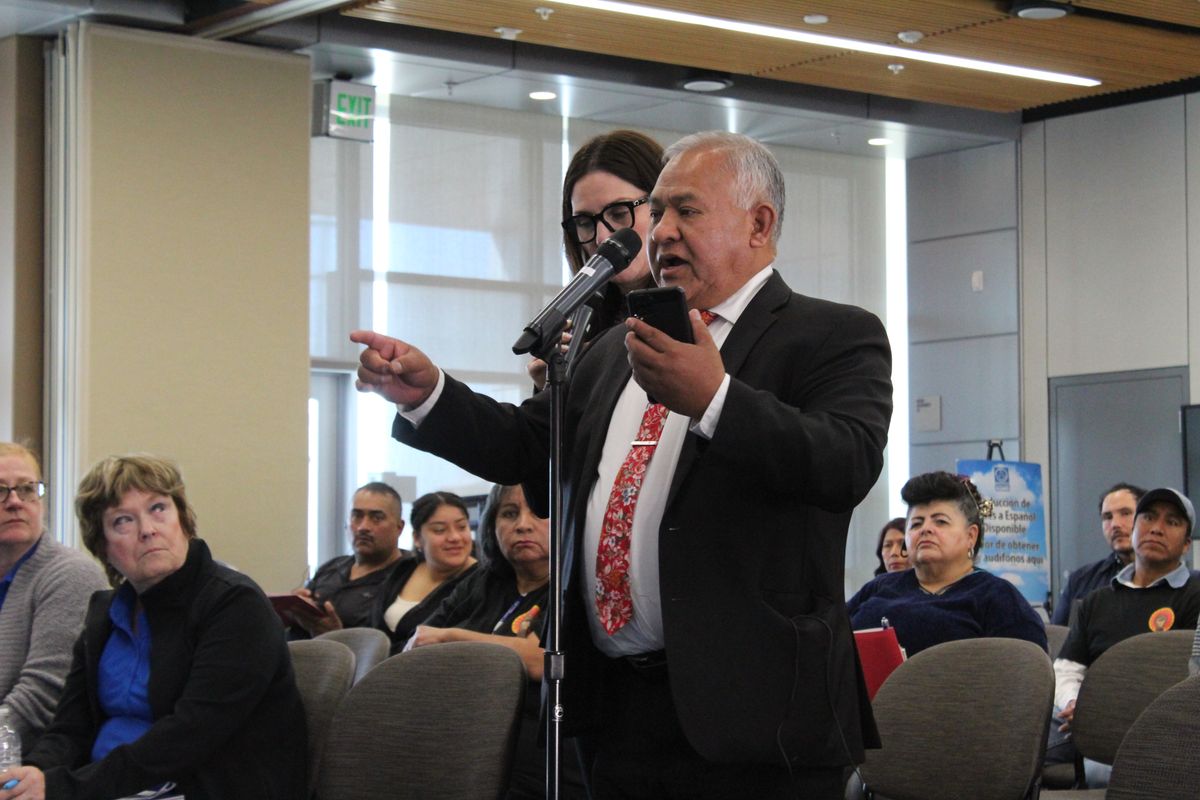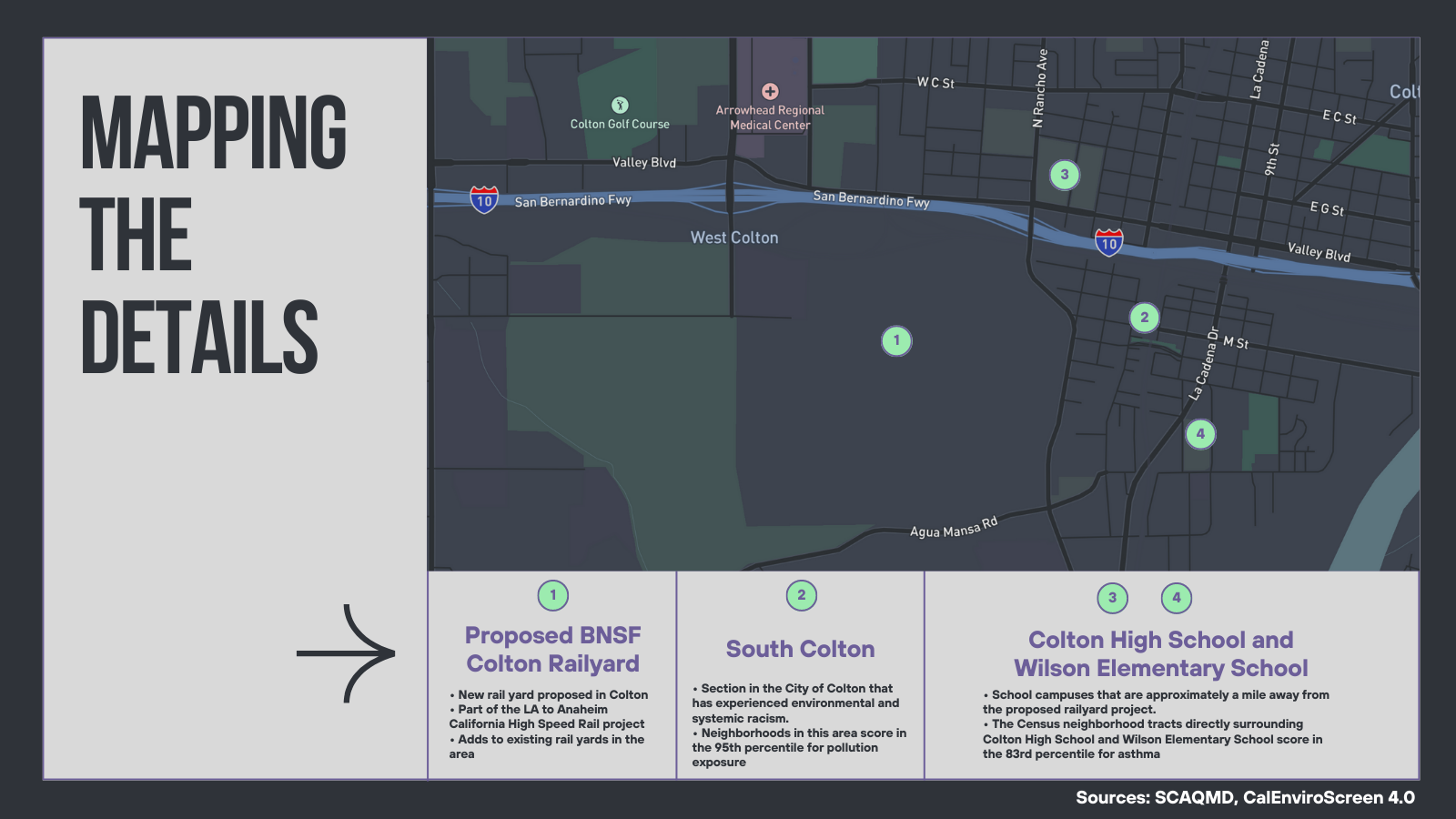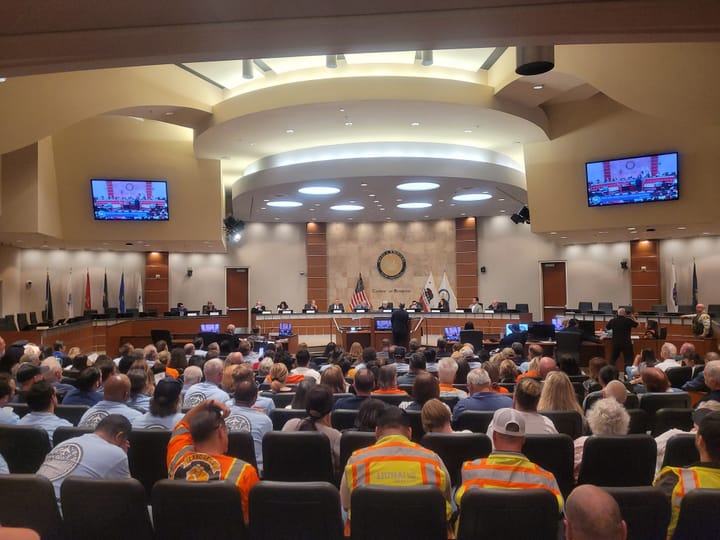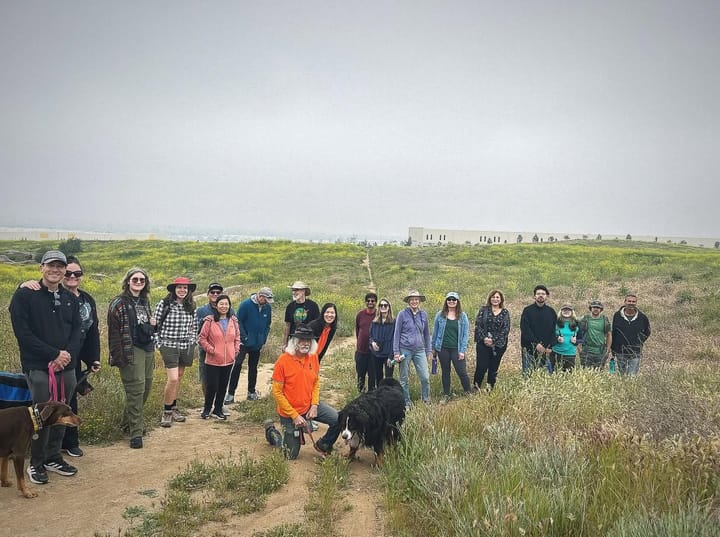Community voices concerned over SCAQMD's new railyard indirect source rule

Local residents, environmental advocacy groups and the South Coast Air Quality Management District (SCAQMD) met at San Bernardino Valley College on Saturday March 25 to discuss a proposed Indirect Source Rule (ISR) to regulate emissions at future rail yard sites.
Proposed Rule (PR) 2306, as the rail yard indirect source rule is known formally by the SCAQMD, will attempt to reduce emissions from mobile sources of pollution at new rail yards to be constructed and opened in the Inland Empire and communities near the Port of Los Angeles and Long Beach. As currently proposed, the railyard ISR for new facilities will focus on transitioning locomotives, cargo handling equipment, drayage trucks, transport refrigeration units and yard trucks (also known as hostlers or yard goats) to low nitrogen oxide through the use of natural or all-electric technology.
BSNF Railway plans to open intermodal facilities in the City of Colton and near the Port of Los Angeles to accommodate the anticipated construction of the High Speed Rail and reroute cargo movement, while meeting expected higher volumes of freight.
Residents who live near BNSF’s intermodal facility in San Bernardino and near the company’s line tracks in south Colton are raising alarms of how their continued growth is affecting public health. Public data provided by SCAQMD indicates that diesel emissions from trains and trucks account for about half of air pollution in Southern California.
“We are not against progress,” said Benjamin Luna, a San Bernardino resident. “We are grateful for the jobs they provide. But the other day, I had to help a young person go to the hospital. He does not smoke, but now he has respiratory issues.”

While many cities and counties across the United States experienced a decrease in air pollution during the COVID-19 pandemic, San Bernardino experienced the opposite effect as online orders increased logistics development and carbon emissions, which impacted black and Latino communities hardest.
Aside from the pandemic and its respiratory health impacts on underserved areas, San Bernardino and Riverside counties topped the American Lung Association's 2022 list for the most ozone-polluted cities in the United States.
Feedback from residents living near freight hubs and the policy advocacy from Sierra Club My Generation and environmental groups was vital for the adoption of the warehouse ISR (PR 2305). After years of pressure and community interaction, the SCAQMD moved to adopt PR 2305 in May 2021. Under this rule, warehouses greater than 100,000 square feet are required to directly reduce nitrogen oxide (NOx) and diesel particulate matter emissions through the use of near zero or zero-emission technology.
Despite sharing appreciation for SCAQMD staff for making time to hear community input at the March 25th meeting, Sierra Club My Generation and community members remain observant of the rulemaking and implementation process and hope it leads to the warehouse and railroad industries bearing responsibility for their emissions impacts.
“Today was a good start on introducing concepts about indirect source rule making for railyards,” said Yassi Kavezade, a longtime clean air advocate and senior representative with the Sierra Club My Generation Campaign. “What was not expressed was how the railroad companies are going to be held accountable for existing railyards.
“Today we just zoomed in on possible developments. And this has been a venture that residents, community members and advocates like myself have been waiting for since 2018 to see what kind of plans are actually going to be taken to change how railyards are operated.”
Kim White, a spokesperson with the SCAQMD, says the agency remains concerned about the emissions impacts of both existing and future railyards, and in regards to the former, will propose to develop an ISR to tackle pollution at places like the BNSF San Bernardino facility.
“We are proposing to develop a new rule for those existing rail yards as soon as we bring this rule on new rail yards to our Board for their consideration this fall,” White shared in an emailed response. “Concurrently, we are also developing another indirect source rule for commercial marine ports, which also have both regional and local health impacts.”
Frontline Observer Editor Anthony Victoria contributed to this story


